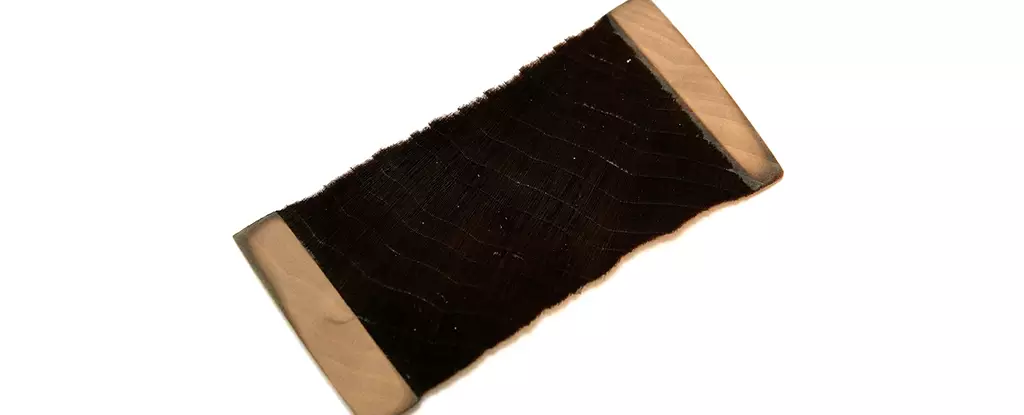A group of researchers, led by PhD student Kenny Cheng from the University of British Columbia, stumbled upon a remarkable discovery while working on water-repelling technologies for wood. They were utilizing high-energy plasma gas and noticed that the application of the gas turned the ends of wood cells completely black. Further examination revealed that the material absorbed more than 99 percent of the light that hits it. The team named this new super-black wood-based material Nxylon, combining the Greek word for night (Nyx) with the Greek word for wood (xylon).
Nxylon boasts a velvety appearance and unique light-absorption properties. The plasma treatment alters the tiny structures on the surface of the wood, creating indentations that capture light and minimize reflections. When a gold alloy was applied to the material, it remained black, indicating a fundamental change in the structure of the wood. This makes Nxylon more than just an extra coating – it is a complete reconfiguration of the material itself.
Applications of Super-Black Materials
Super-black materials like Nxylon have a wide range of applications in various industries. They are valuable in astronomy, solar energy, and optics, where they help reduce unwanted light reflection, improve device functionality, and enhance clarity in telescopes. Additionally, super-black materials are popular in art and design for their striking visual effects and ability to create sharp contrasts with bright colors.
Potential Commercial Use and Advantages
The researchers believe that Nxylon could revolutionize the wearable and fashion accessories industry. The material’s lightweight, stiffness, and ease of cutting into intricate shapes make it versatile for a wide range of applications. Nxylon is made from renewable basswood and does not require complex pre-treatments, reducing costs and making production more viable. The team is confident that Nxylon can replace rare and expensive black woods like ebony and rosewood, as well as the black gemstone onyx.
While there are materials even blacker than Nxylon, the discovery shows promise in terms of scalability and commercial production. The same plasma etching technique used to create Nxylon could potentially be applied to other types of wood as well. The researchers are seeking commercial partnerships through a new startup venture to further explore the commercial potential of Nxylon. With its sustainable and renewable properties, Nxylon has the potential to open up new applications for wood in North America and Europe.
The accidental discovery of Nxylon represents a significant advancement in material science. Its super-black properties, unique structural features, and potential commercial applications make it an exciting innovation in the industry. As researchers continue to explore and refine the properties of Nxylon, we can expect to see this remarkable material making its way into a wide range of industries and products in the near future.

Leave a Reply